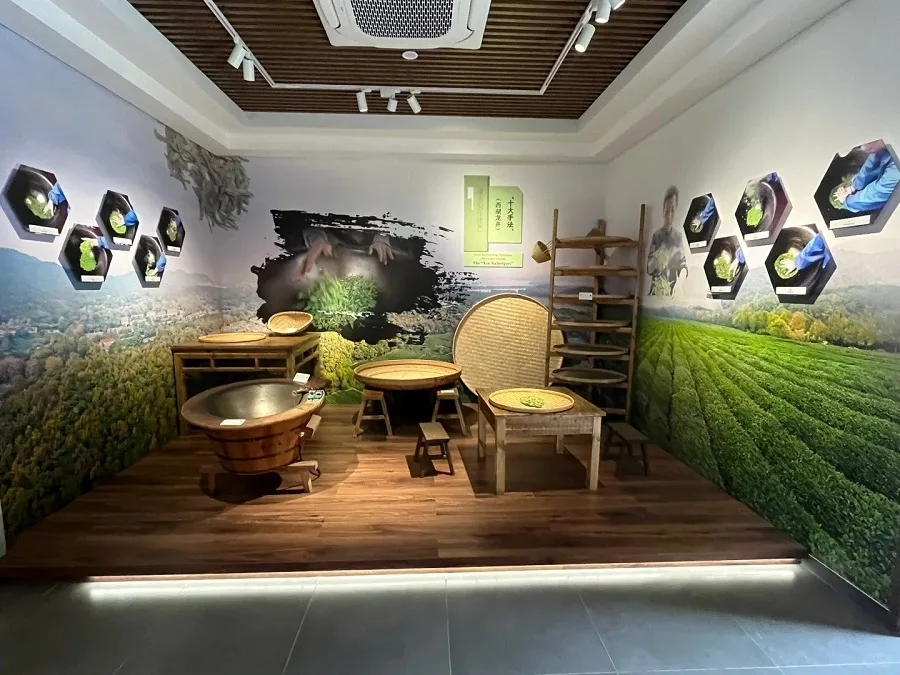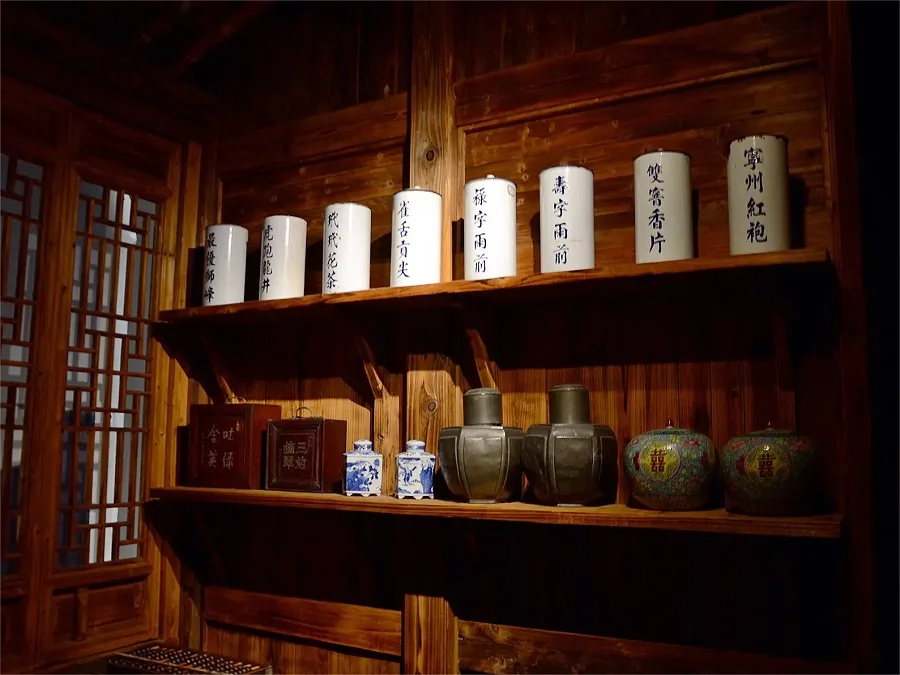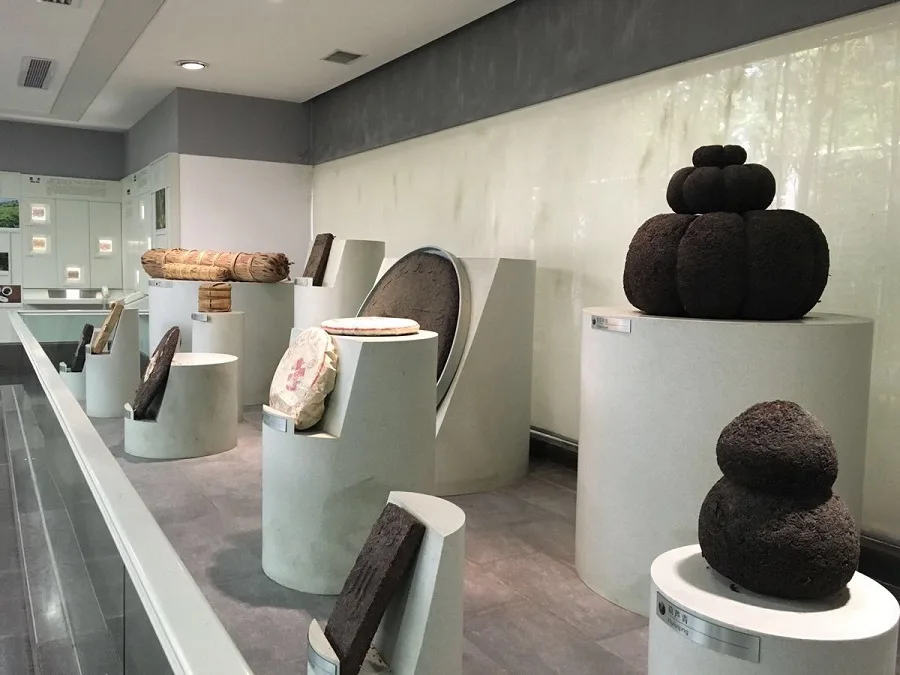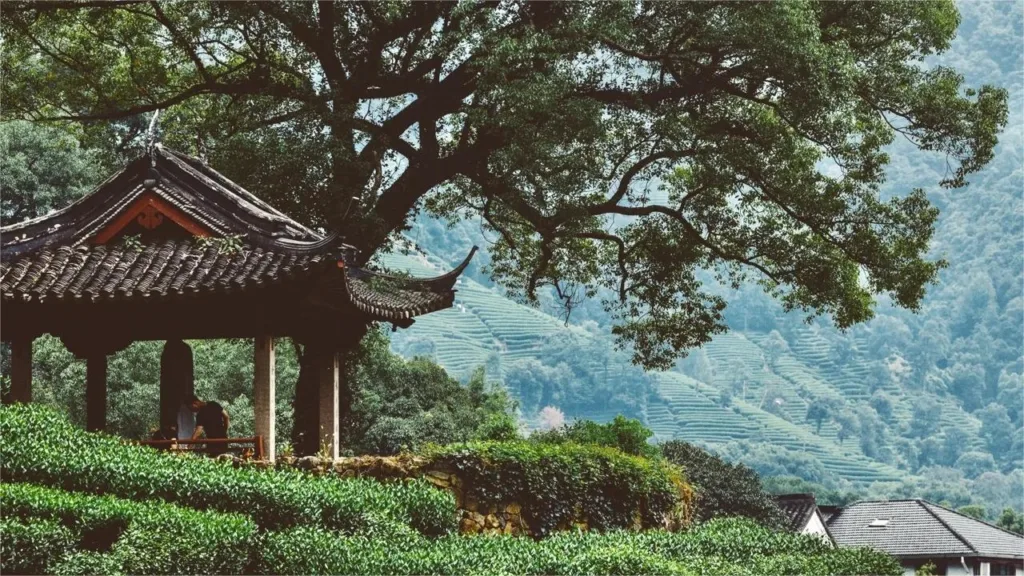The Chinese Tea Museum (中国茶叶博物馆), located in Hangzhou, covers an area of 4.7 hectares and serves as a museum primarily dedicated to showcasing tea culture. It features six main exhibition spaces: Tea History, Tea Essence, Tea Events, Tea Fate, Tea Ware, and Tea Customs. These spaces are relatively independent yet interconnected, providing comprehensive interpretations of tea culture from various perspectives. Visitors can explore different varieties of tea from both domestic and international sources, as well as witness the evolution and development of tea utensils throughout different historical periods. Additionally, they can learn about the tea-making process and the tea-drinking methods and etiquette from Yunnan, Sichuan, Tibet, Fujian, Guangdong, as well as from the Ming and Qing dynasties. The Chinese Tea Museum offers a rich and immersive experience for anyone interested in the history and culture of tea.
Table of Contents
- Basic Information
- Location and Transportation
- Exhibitions in Chinese Tea Museum
- Vlog about Chinese Tea Museum
- Attractions near Chinese Tea Museum
Basic Information
| Estimated Length of Tour | 2 hours |
| Ticket Price | Free |
| Opening Hours | 9.00 – 16.30; Closed on Mondays |
| Telephone Number | 0086-0571-87964221 |
Location and Transportation
The Chinese Tea Museum is located at No. 88 Longjing Road, Shuangfeng Village, Longjing Township, Xihu District, Hangzhou City, Zhejiang Province, China. It is situated on the west side of the West Lake Scenic Area. To get there, you can take bus 27 or 87 and get off at Shuangfeng Stop (双峰站).
Exhibitions in Chinese Tea Museum
Tea History Hall

The Tea History Hall takes visitors on a journey through the history of tea, starting with the millennium-old wild tea trees. Through tangible artifacts such as slices of large tea trees, tree trunk specimens, and tea seeds, it vividly illustrates that China was the earliest country to discover and utilize tea leaves. The exhibition begins with the story of Shen Nong tasting various herbs, followed by displays of rustic drinking vessels, exquisite court tea utensils, historical relics related to tea culture, and poetry, songs, and essays about tea from various dynasties. The hall highlights several important historical stages in the development of tea culture, such as “Tang Dynasty tea with initial appearance,” “Prosperous Song Dynasty tea,” “Return to simplicity in the Ming Dynasty,” “Transition to secularism in the Qing Dynasty,” and “Tea improvement period – tea in the Republic of China.” It showcases the history of tea from its medicinal, culinary, and beverage uses to its spread abroad.
Tea Essence Hall

The Tea Essence Hall categorizes over 300 varieties of tea from tea-producing regions across China into six major types: green tea, black tea, oolong tea, yellow tea, white tea, and dark tea, as well as processed teas. These teas are processed into vacuum specimens according to different manufacturing methods and quality differences. The hall is equipped with special headphones, allowing visitors to listen to audio explanations in Chinese and English by clicking buttons representing different types of tea samples. Additionally, an open display area in the center of the hall showcases various compressed teas, including Golden Melon Tea, Bamboo Shoot Tea, Seven Sons Cake Tea, Brick Tea, and Fu Brick Tea, with diameters ranging from one to over a hundred centimeters. Notably, there are Pu’er tea bricks weighing up to 360 kilograms, exuding exquisite craftsmanship and fragrant aromas.
Tea Customs Hall

The Tea Customs Hall introduces representative regional tea customs in China, depicting the daily lives of people from different ethnic groups who enjoy drinking tea. Scenes include Tibetan butter tea drinking places, Yunnan Dai bamboo house tea roasting scenes, Sichuan teahouses, and tea mansions of the Huizhou merchants during the Ming and Qing dynasties. Using reconstructed or simulated tea customs scenes as display methods, the hall adopts an open exhibition approach, allowing visitors to immerse themselves in the diverse tea cultures of China.
Tea Affairs Hall

The Tea Affairs Hall showcases scientific and technological aspects related to tea cultivation, harvesting, biological morphology, processing techniques, brewing art, tea storage, tea and health, and major tea-producing regions in China. To enhance the exhibition’s appeal, several interactive elements are incorporated. Firstly, a large revolving wheel in the “Tea Tasting” section displays information such as brewing time, tea quantity, and water-to-tea ratio when spun. Secondly, a set of tea processing machinery models is positioned in the center of the hall, demonstrating the entire tea processing process through slow rotation. Lastly, in the “Tea and Water Temperature” section, inspired by Lu Yu’s “Three Boils” concept, a glass tank in the shape of a raised pot holder is used to store water, with three scenes designed to simulate different degrees of boiling effects: fisheye, bubbling spring, and surging waves.
Tea Fate Hall

The Tea Fate Hall primarily displays photographs and calligraphy works from renowned figures such as Jiang Zemin, former President of the United States Richard Nixon, and notable personalities like Wang Dao Han and Jin Yong, who have visited the Chinese Tea Museum since its establishment. These exhibits reflect how tea has connected people and cultures, fostering bonds that transcend borders.
Tea Ware Hall

The Tea Ware Hall systematically showcases tea utensils from various historical periods, ranging from pottery water vessels from the Neolithic era to tea utensils from the Qing Dynasty. It is divided into four sections: “Tea Utensils Before the Tang Dynasty,” “Tea Utensils of the Tang Dynasty,” “Tea Utensils of the Song and Yuan Dynasties,” and “Tea Utensils of the Ming and Qing Dynasties.” In addition to teapots and teacups, the exhibition includes items such as tea trays, tea bowls, tea storage jars, tea grinders, tea spoons, and tea rules, featuring diverse styles, exquisite craftsmanship, unique appellations, and a wide range of materials, including ceramics, gold, silver, tin, copper, jade, lacquer, glass, stone, and ivory. Notable exhibits include a Five Dynasties Yue Kiln melon-shaped teapot, a Song Dynasty Jian Kiln rabbit hair pattern tea bowl, a Song Dynasty Longquan Kiln celadon teapot, a Qing Dynasty blue and white poetry cup and tray, a Qing Dynasty redwood tea cluster, and a Qing Dynasty green jade poetry teapot.






